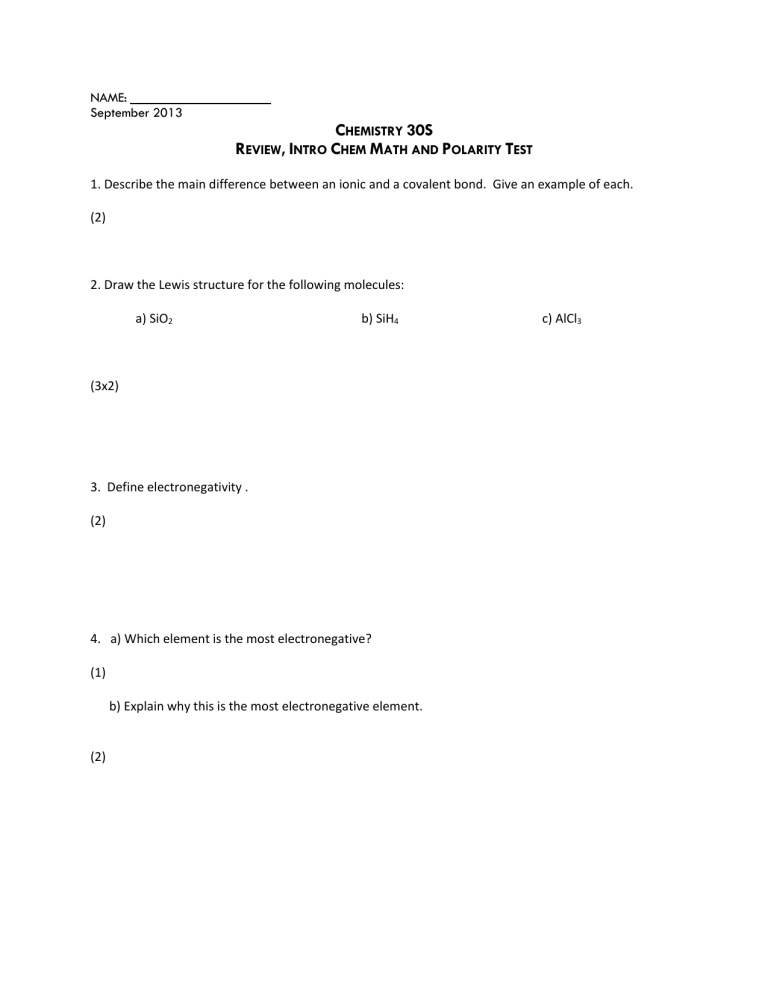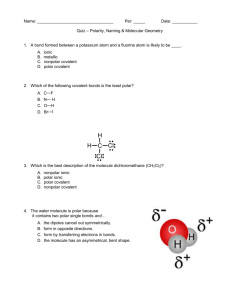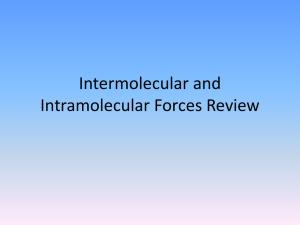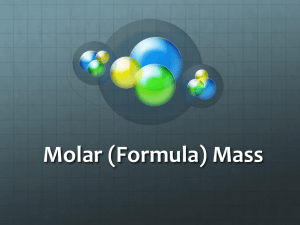Chemistry 30S Review, Intro Chem Math and Polarity Test

NAME:
September 2013
C
HEMISTRY
30S
R
EVIEW
, I
NTRO
C
HEM
M
ATH AND
P
OLARITY
T
EST
1. Describe the main difference between an ionic and a covalent bond. Give an example of each.
(2)
2. Draw the Lewis structure for the following molecules: a) SiO
2 b) SiH
4 c) AlCl
3
(3x2)
3. Define electronegativity .
(2)
(2)
4. a) Which element is the most electronegative?
(1)
b) Explain why this is the most electronegative element.
5. Write the formula AND name for each of the ionic compounds formed by: a) calcium and flourine _________________ ___________________
(4) b) potassium and oxygen _________________ ___________________
6. Write the formula OR name for the following covalent compounds: a) calcium hydroxide _________________ c) BeO _________________
(4) b) carbon tetrahydride _________________ d) CO
2
_________________
8. Use the t-chart method for the following unit conversions. Make sure to include units throughout. a) How many seconds are in 45 days?
(2) b) How many miles are in 1025 km (1 mile = 1.6 km)
(4)
(2)
9. How many significant digits in the following? a) 126 000 _____ b) 0.0025 c) 1.05 x 10 3
_____
_____ d) 125.06 _____
10. Perform the following mathematical operation, and then round the answer according to significant digits. a) 124 x 0.050
(2) b) 358.25/3.05
(2)
11. For each of the following molecule: a) Calculate ΔEN b) Declare if the bond is polar, nonpolar or ionic, and draw any dipoles if present c) use VSEPR theory to draw the molecule in 3D (You may wish to use Lewis diagrams as rough work to figure out how to draw the molecule. ) d) Name the shape of the molecule e) List if the substance is ionic, or if it is a nonpolar or polar molecule a) BI
3 b) H
2
O
(6x5) c) SiBr
3
H d) CO
2
e) NF
3 f) CBr
4
Bonus: Why is an ionic molecule an oxymoron?
/63








